
"Do Not Stand At My Grave And Weep." by JulieMahony Redbubble
Do not stand at my grave and weep; I am not there. I do not sleep. I am a thousand winds that blow. I am the diamond glints on snow. I am the sunlight on ripened grain. I am the gentle autumn rain. When you awaken in the morning's hush I am the swift uplifting rush Of quiet birds in circled flight. I am the soft stars that shine at night.

Do Not Stand At My Grave and Weep Instant Download Printable Etsy
Looking For Do Not Stand At My Grave? We Have Almost Everything On eBay. But Did You Check eBay? Check Out Do Not Stand At My Grave On eBay.
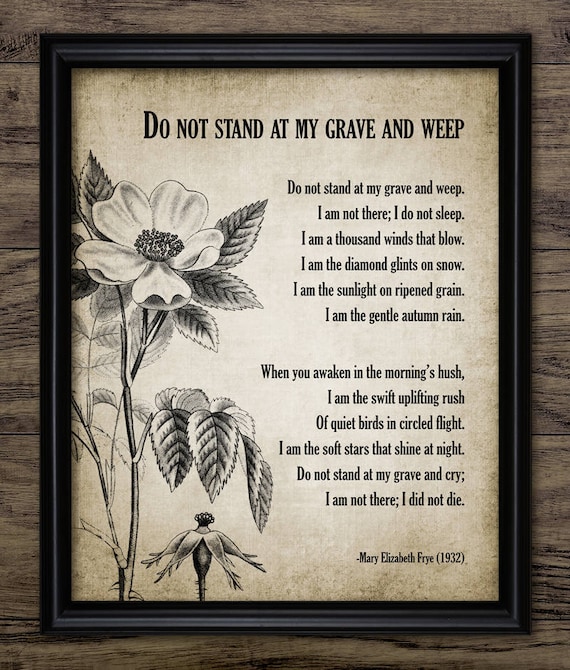
Do Not Stand At My Grave And Weep Art Bereavement Print Etsy
October 15, 2022 by Robin. Do Not Stand at My Grave and Weep is a poem written in 1932 by Mary Elizabeth Frye. Though often attributed to Native American or Buddhist sources, the poem was actually written by an American woman who was deeply affected by the death of a friend's mother. The poem has become a popular choice for funerals and.
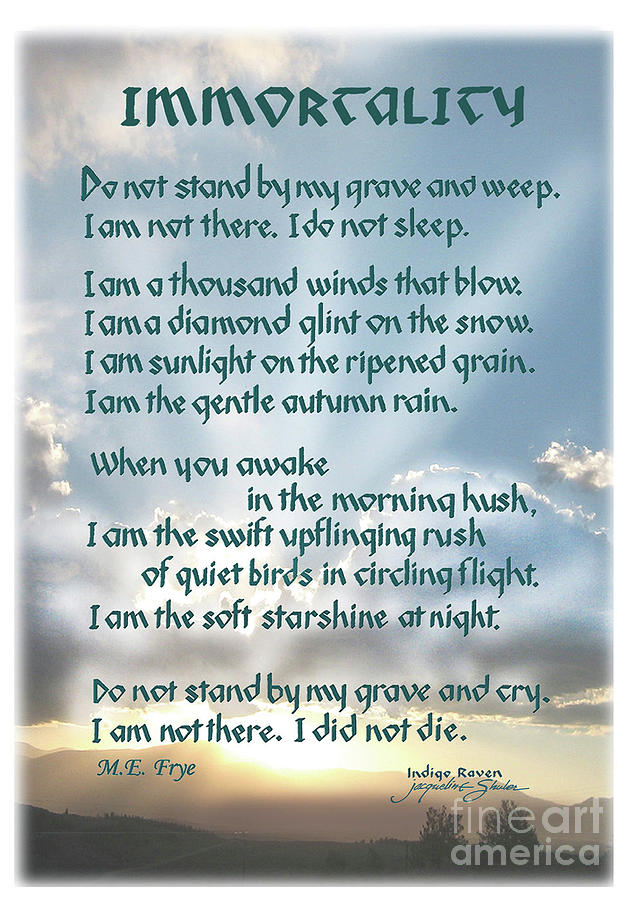
Do not Stand at my Grave and Weep Photograph by Jacqueline Shuler
What Does the Poem 'Do Not Stand at My Grave And Weep' Mean? The poem "Do Not Stand at My Grave and Weep" is a call to action in 12 lines. It's composed of rhyming couplets in iambic tetrameter, though a few lines have extra syllables breaking up the structure to give extra emphasis.

Do Not Stand at My Grave and Weep 50+ World 50+ World
Popularity of "Do Not Stand at My Grave and Weep": Written by Mary Elizabeth Frye, a not-so-popular American writer and poet, "Do Not Stand at My Grave and Weep" is a suggestive poetic piece.The poem revolves around the idea of death and the afterlife. It alludes to the idea that the soul lives on after death, and suggests that one should find comfort in their faith and belief in the.

Do Not Stand at My Grave and Weep (SATB ) by J.W. Pepper Sheet Music
In 1932, Clare's brother, died at only 31 years old. In December 1934, Clare Harner's poem "Immortality" (now well known as "Do Not Stand At My Grave And Weep") was published in The Gypsy all poetry magazine. "Immortality" was reprinted in the Kansas City Times on February 8, 1935. The Gypsy published one other poem of hers, "Where You Go.

Do Not Stand At My Grave And Weep By Mary Elizabeth Frye Words of
# Do not stand at my grave and weep, I am not there, I do not sleep. I am in a thousand winds that blow, I am the softly falling snow. I am the gentle showers of rain, I am the fields of ripening grain. I am in the morning hush, I am in the graceful rush Of beautiful birds in circling flight, I am the starshine of the night.

Image result for do not stand at my grave and weep poem Scripture
'Do Not Stand at My Grave and Weep' I recited this poem at the funeral of my father, who died suddenly at the age of 91 after a good and full life. We wanted the funeral service to be a celebration of his life and I felt that this beautiful poem set the tone for the service.
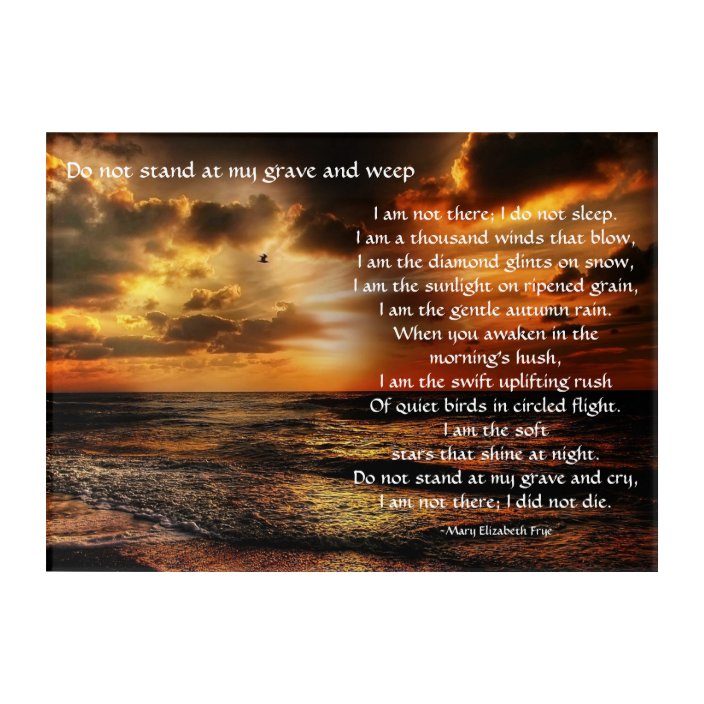
Do Not Stand at My Grave and Weep Poem Acrylic Print
The Full Text of "Immortality (Do not stand at my grave and weep)". 1 Do not stand. 2 By my grave, and weep. 3 I am not there, 4 I do not sleep—. 5 I am the thousand winds that blow. 6 I am the diamond glints in snow. 7 I am the sunlight on ripened grain, 8 I am the gentle, autumn rain.
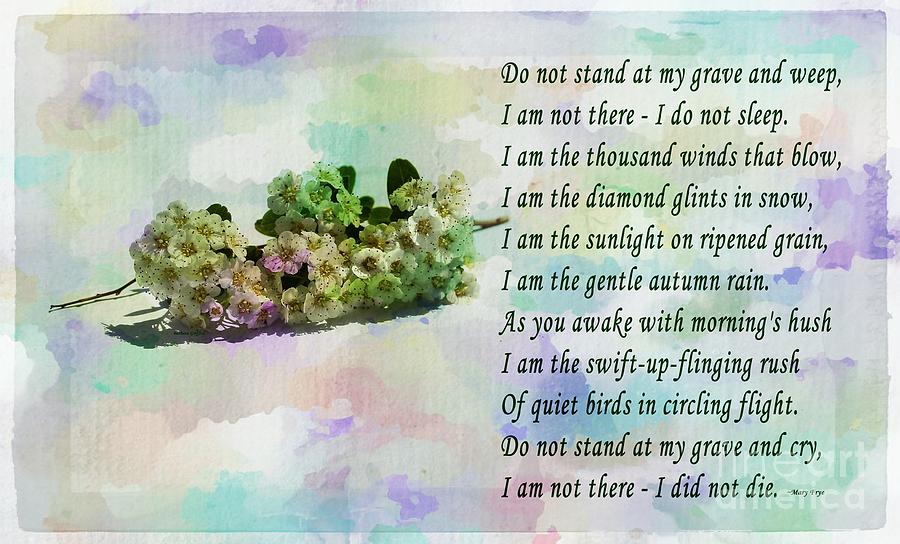
Do Not Stand at My Grave and Weep Photograph by Barbara A Griffin
Mary Frye is an American poet best known for the piece 'Do Not Stand at My Grave and Weep.' She was born on November 13, 1905 in Dayton. She spent much of her life as a housewife and is known primarily for the single, memorable poem. Do Not Stand at My Grave and Weep
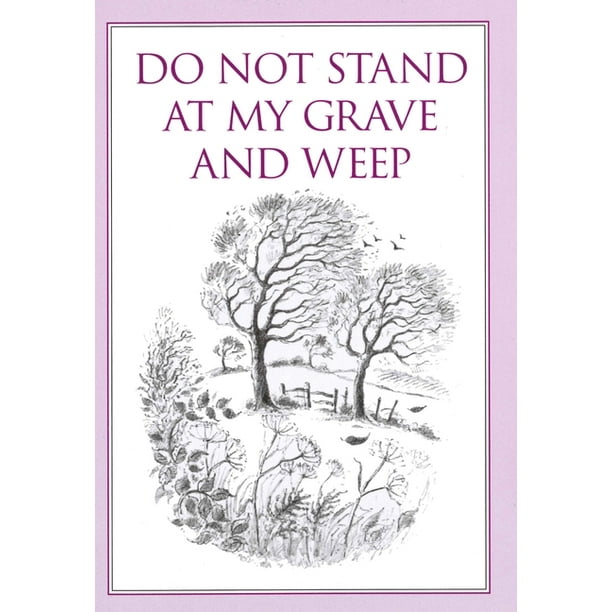
Inspirational S Do Not Stand at My Grave and Weep (Hardcover
Do not stand at my grave and weep. I am not there, I do not sleep. (Do not stand at my grave and cry. I am not there, I did not die!) 7. "Remember Me - I Will Live Forever" by Robert N. Test "Remember Me - I Will Live Forever" is a popular song at a memorial service or celebration of life for some who was an organ donor or a whole body.
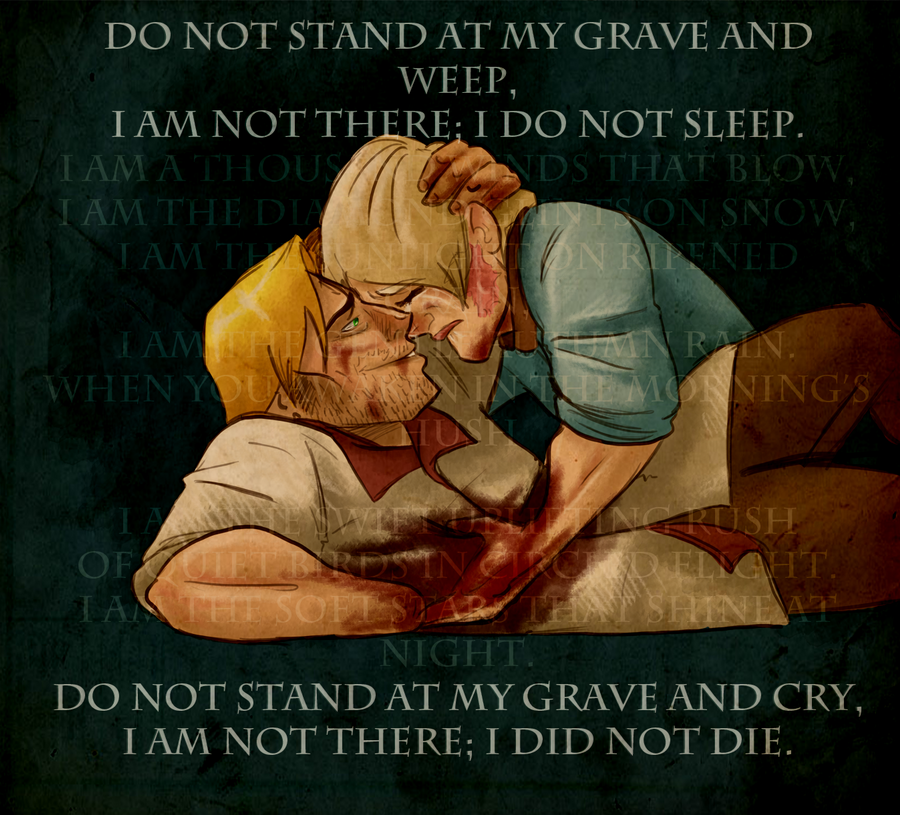
Do not stand at my grave and weep... by TopHatTurtle on DeviantArt
by Mary Elizabeth Frye. Do not stand at my grave and weep, I am not there; I do not sleep. I am a thousand winds that blow, I am the diamond glints on snow, I am the sun on ripened grain, I am the gentle autumn rain. When you awaken in the morning's hush. I am the swift uplifting rush.

Do Not Stand at My Grave and Weep Wikipedia Funeral poems, Weeping
" Do not stand by my grave and weep " is the first line and popular title of the bereavement poem " Immortality ", written by Clare Harner in 1934. Often now used is a slight variant: "Do not stand at my grave and weep". Origins
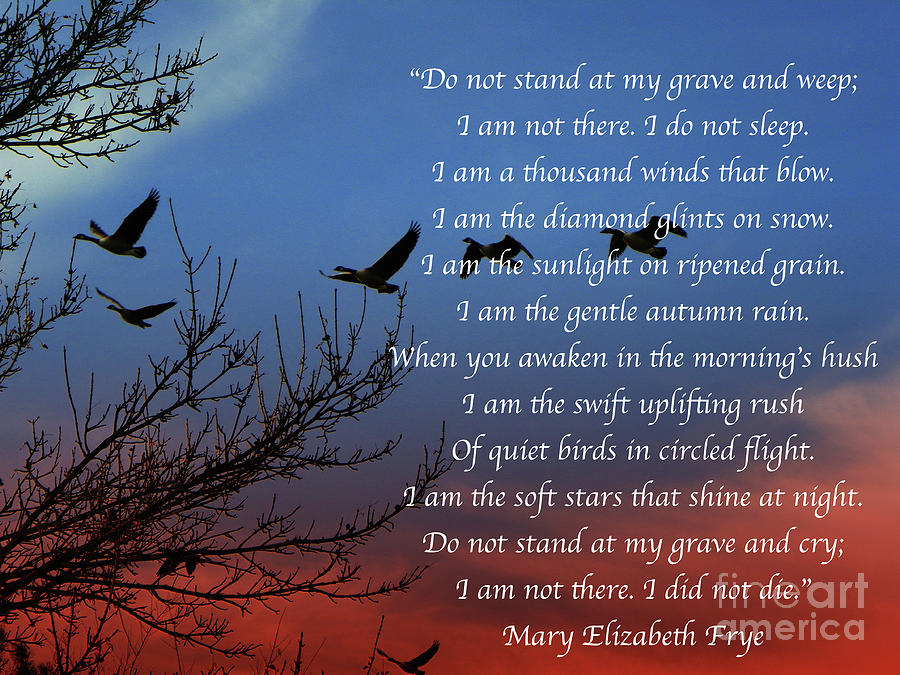
Youtube do not stand at my grave and weep godnaxre
Do not stand By my grave, and weep, I am not there, I do not sleep--I am the thousand winds that blow, I am the diamond glints in snow. I am the sunlight on ripened grain, I am the gentle, autumn rain. As you awake with morning's hush, I am the swift, up-flinging rush Of quiet birds in circling flight. I am the day transcending night. Do not stand By my grave, and cry-- I am not there, I did.

do not stand at my grave and weep signs and quotes Pinterest
Do not stand at my grave and weep, I am not there, I do not sleep I am the thousand winds that blow, I am the diamond glints on snow I am the sunlught on ripened grain, I am the gentle autumn rain When you awake in the morning hush, I am the swift uplifting rush Of quiet birds in circling flight

Lyric Video Do Not Stand At My Grave And Weep YouTube
"Do not stand at my grave and weep" is the first line and popular title of this bereavement poem of disputed authorship. This extremely famous poem has been read at countless funerals and public occasions. There are in existence many slightly different versions of the poem.